Neiman Marcus 2003 Annual Report Download - page 21
Download and view the complete annual report
Please find page 21 of the 2003 Neiman Marcus annual report below. You can navigate through the pages in the report by either clicking on the pages listed below, or by using the keyword search tool below to find specific information within the annual report.-
 1
1 -
 2
2 -
 3
3 -
 4
4 -
 5
5 -
 6
6 -
 7
7 -
 8
8 -
 9
9 -
 10
10 -
 11
11 -
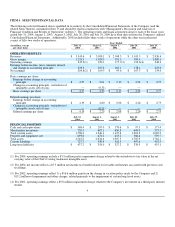 12
12 -
 13
13 -
 14
14 -
 15
15 -
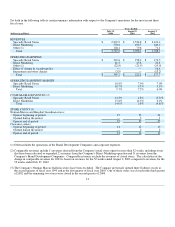 16
16 -
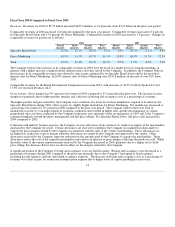 17
17 -
 18
18 -
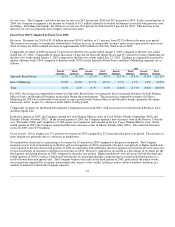 19
19 -
 20
20 -
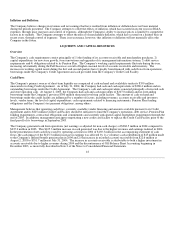 21
21 -
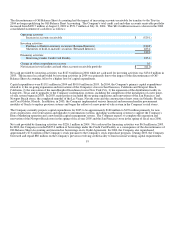 22
22 -
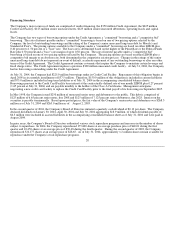 23
23 -
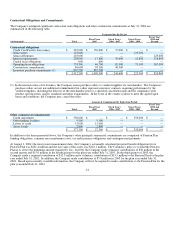 24
24 -
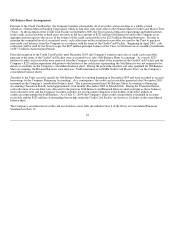 25
25 -
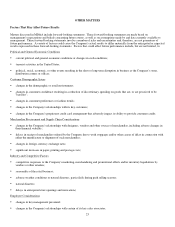 26
26 -
 27
27 -
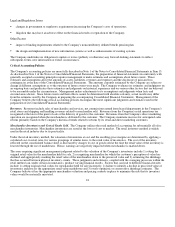 28
28 -
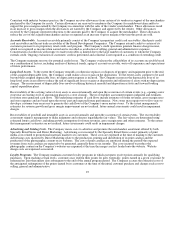 29
29 -
 30
30 -
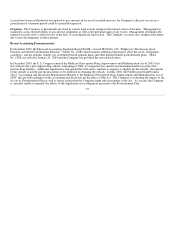 31
31 -
 32
32 -
 33
33 -
 34
34 -
 35
35 -
 36
36 -
 37
37 -
 38
38 -
 39
39 -
 40
40 -
 41
41 -
 42
42 -
 43
43 -
 44
44 -
 45
45 -
 46
46 -
 47
47 -
 48
48 -
 49
49 -
 50
50 -
 51
51 -
 52
52 -
 53
53 -
 54
54 -
 55
55 -
 56
56 -
 57
57 -
 58
58 -
 59
59 -
 60
60 -
 61
61 -
 62
62 -
 63
63 -
 64
64 -
 65
65 -
 66
66 -
 67
67 -
 68
68 -
 69
69 -
 70
70 -
 71
71 -
 72
72 -
 73
73 -
 74
74 -
 75
75 -
 76
76 -
 77
77 -
 78
78 -
 79
79 -
 80
80 -
 81
81 -
 82
82 -
 83
83 -
 84
84 -
 85
85 -
 86
86 -
 87
87 -
 88
88 -
 89
89 -
 90
90 -
 91
91 -
 92
92 -
 93
93 -
 94
94 -
 95
95 -
 96
96 -
 97
97 -
 98
98 -
 99
99 -
 100
100 -
 101
101 -
 102
102 -
 103
103 -
 104
104 -
 105
105 -
 106
106 -
 107
107 -
 108
108 -
 109
109 -
 110
110 -
 111
111 -
 112
112 -
 113
113 -
 114
114 -
 115
115 -
 116
116 -
 117
117 -
 118
118 -
 119
119 -
 120
120 -
 121
121 -
 122
122 -
 123
123 -
 124
124 -
 125
125 -
 126
126 -
 127
127 -
 128
128 -
 129
129 -
 130
130 -
 131
131 -
 132
132 -
 133
133 -
 134
134 -
 135
135 -
 136
136 -
 137
137 -
 138
138 -
 139
139 -
 140
140 -
 141
141 -
 142
142 -
 143
143 -
 144
144 -
 145
145 -
 146
146 -
 147
147 -
 148
148 -
 149
149 -
 150
150 -
 151
151 -
 152
152 -
 153
153 -
 154
154 -
 155
155 -
 156
156 -
 157
157 -
 158
158 -
 159
159 -
 160
160 -
 161
161 -
 162
162 -
 163
163 -
 164
164 -
 165
165 -
 166
166 -
 167
167 -
 168
168 -
 169
169 -
 170
170 -
 171
171 -
 172
172 -
 173
173 -
 174
174 -
 175
175 -
 176
176 -
 177
177 -
 178
178 -
 179
179 -
 180
180 -
 181
181 -
 182
182 -
 183
183 -
 184
184 -
 185
185 -
 186
186 -
 187
187 -
 188
188 -
 189
189 -
 190
190 -
 191
191 -
 192
192 -
 193
193 -
 194
194 -
 195
195 -
 196
196 -
 197
197 -
 198
198 -
 199
199 -
 200
200 -
 201
201 -
 202
202 -
 203
203 -
 204
204 -
 205
205 -
 206
206 -
 207
207 -
 208
208 -
 209
209 -
 210
210 -
 211
211 -
 212
212 -
 213
213 -
 214
214 -
 215
215 -
 216
216 -
 217
217 -
 218
218 -
 219
219 -
 220
220 -
 221
221 -
 222
222 -
 223
223 -
 224
224 -
 225
225 -
 226
226 -
 227
227 -
 228
228 -
 229
229 -
 230
230 -
 231
231 -
 232
232 -
 233
233 -
 234
234 -
 235
235 -
 236
236 -
 237
237 -
 238
238 -
 239
239 -
 240
240 -
 241
241 -
 242
242 -
 243
243 -
 244
244 -
 245
245 -
 246
246 -
 247
247 -
 248
248 -
 249
249 -
 250
250 -
 251
251 -
 252
252 -
 253
253 -
 254
254 -
 255
255 -
 256
256 -
 257
257 -
 258
258 -
 259
259 -
 260
260 -
 261
261 -
 262
262 -
 263
263 -
 264
264 -
 265
265 -
 266
266 -
 267
267 -
 268
268 -
 269
269 -
 270
270 -
 271
271 -
 272
272 -
 273
273 -
 274
274 -
 275
275 -
 276
276 -
 277
277 -
 278
278 -
 279
279 -
 280
280 -
 281
281 -
 282
282 -
 283
283 -
 284
284 -
 285
285 -
 286
286 -
 287
287 -
 288
288 -
 289
289 -
 290
290 -
 291
291 -
 292
292 -
 293
293 -
 294
294 -
 295
295 -
 296
296 -
 297
297 -
 298
298 -
 299
299 -
 300
300 -
 301
301 -
 302
302 -
 303
303 -
 304
304 -
 305
305 -
 306
306 -
 307
307 -
 308
308 -
 309
309 -
 310
310 -
 311
311 -
 312
312 -
 313
313 -
 314
314 -
 315
315 -
 316
316 -
 317
317 -
 318
318 -
 319
319 -
 320
320 -
 321
321 -
 322
322 -
 323
323 -
 324
324 -
 325
325 -
 326
326 -
 327
327 -
 328
328 -
 329
329 -
 330
330 -
 331
331 -
 332
332 -
 333
333 -
 334
334 -
 335
335 -
 336
336 -
 337
337 -
 338
338 -
 339
339 -
 340
340 -
 341
341 -
 342
342 -
 343
343 -
 344
344 -
 345
345 -
 346
346 -
 347
347 -
 348
348 -
 349
349 -
 350
350 -
 351
351 -
 352
352 -
 353
353 -
 354
354 -
 355
355 -
 356
356 -
 357
357
 |
 |

Inflation and Deflation
The Company believes changes in revenues and net earnings that have resulted from inflation or deflation have not been material
during the periods presented. The Company attempts to offset the effects of inflation, which has occurred in recent years in SG&A
expenses, through price increases and control of expenses, although the Company's ability to increase prices is limited by competitive
factors in its markets. The Company attempts to offset the effects of merchandise deflation, which has occurred on a limited basis in
recent years, through control of expenses. There is no assurance, however, that inflation or deflation will not materially affect the
Company in the future.
LIQUIDITY AND CAPITAL RESOURCES
Overview
The Company's cash requirements consist principally of 1) the funding of its accounts receivable and merchandise purchases, 2)
capital expenditures for new store growth, store renovations and upgrades of its management information systems, 3) debt service
requirements and 4) obligations related to its Pension Plan. The Company's working capital requirements fluctuate during the year,
increasing substantially during the Fall Season as a result of higher seasonal levels of accounts receivable and inventory. The
increases in working capital needs during the first and second quarters have typically been financed with cash flows from operations,
borrowings under the Company's Credit Agreement and cash provided from the Company's Credit Card Facility.
Cash Flows
The Company's primary sources of short-term liquidity are comprised of cash on hand and availability under its $350 million
unsecured revolving Credit Agreement. As of July 31, 2004, the Company had cash and cash equivalents of $368.4 million and no
outstanding borrowings under the Credit Agreement. The Company's cash and cash equivalents consisted principally of invested cash
and store operating cash. At August 2, 2003, the Company had cash and cash equivalents of $207.0 million and no outstanding
borrowings under the Company's previous $300 million unsecured revolving credit facility. The amount of cash on hand and
borrowings under the credit facility are influenced by a number of factors, including revenues, accounts receivable and inventory
levels, vendor terms, the level of capital expenditures, cash requirements related to financing instruments, Pension Plan funding
obligations and the Company's tax payment obligations, among others.
Management believes that operating cash flows, currently available vendor financing and amounts available pursuant to its Credit
Agreement and its $225 million Credit Card Facility should be sufficient to fund the Company's operations, debt service, Pension Plan
funding requirements, contractual obligations and commitments and currently anticipated capital expenditure requirements through the
end of 2005. In addition, management anticipates negotiating a new credit card facility to replace the Credit Card Facility prior to the
final payoff of its borrowings in September 2005.
The Company generated cash from operations (net earnings as adjusted for non-cash charges) of $362.5 million in 2004 compared to
$237.2 million in 2003. This $125.3 million increase in cash generated was due to the higher revenues and earnings realized in 2004.
In the presentation of net cash flows used by operating activities in 2004 of $192.3 million in the accompanying statement of cash
flows, the cash impact of the $125.3 million increase in earnings was affected by 1) a voluntary cash contribution of $45 million made
to the Company's defined benefit pension plan in 2004 and 2) the increase in recorded accounts receivable from $22.6 million at
August 2, 2003 to $551.7 million at July 31, 2004. The increase in accounts receivable is attributable to both a higher investment in
accounts receivable due to higher revenues during 2004 and the discontinuance of Off-Balance Sheet Accounting beginning in
December 2003, as more fully described in Note 2 of the Notes to Consolidated Financial Statements.
18
